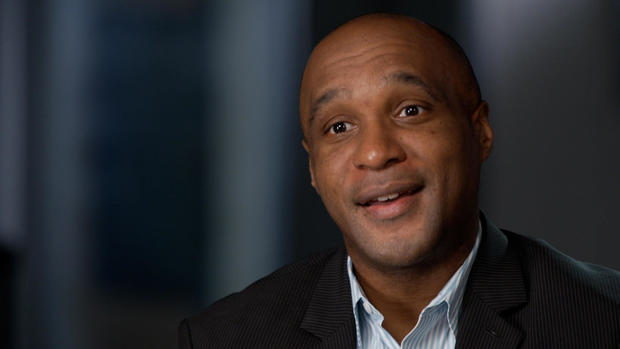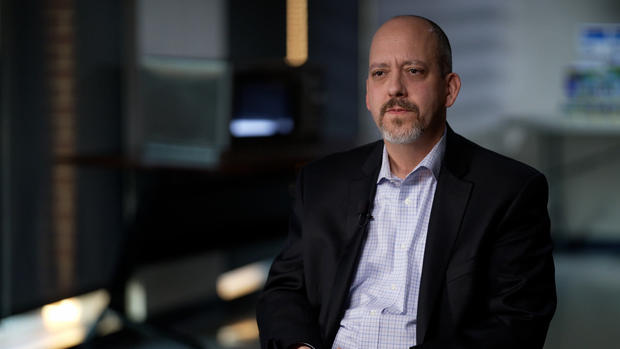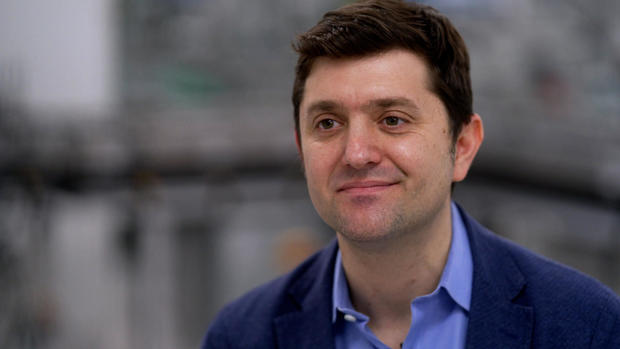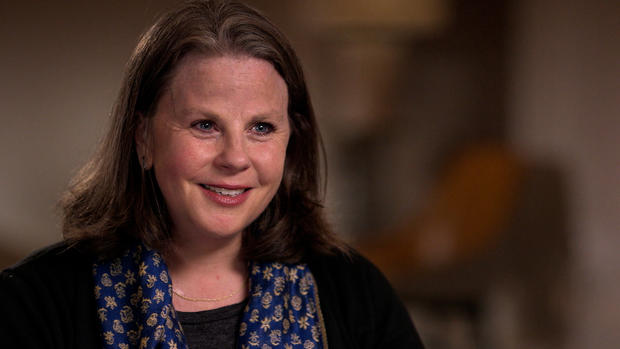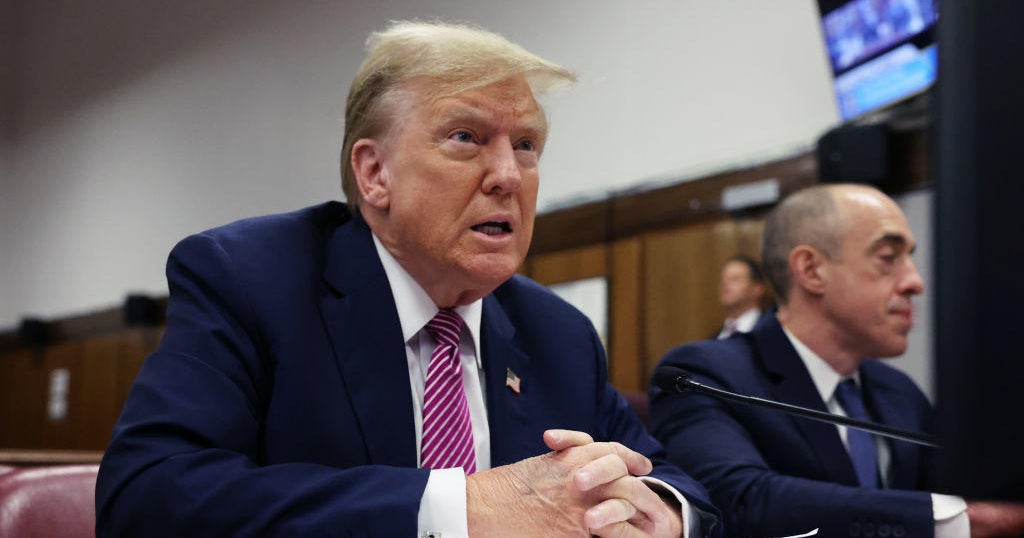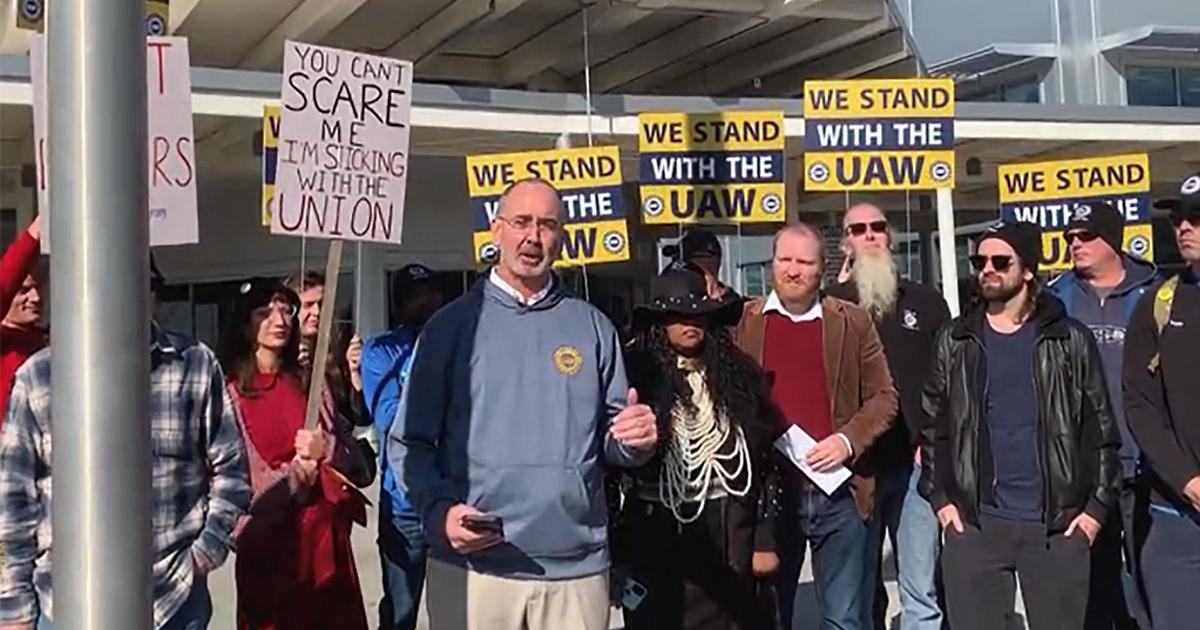How the United States plans to increase the pace of COVID-19 vaccinations
This weekend marks the addition of a third COVID-19 vaccine to America's arsenal against the pandemic. Johnson & Johnson's one-dose inoculation joins Pfizer and Moderna's two-dose vaccines for use in the United States.
As impressive as the scientific advancements have been, getting shots into people's arms has been plagued by bad weather, bad logistics and bad information.
The Biden administration's coronavirus coordinator Jeff Zients, in his first television interview since taking the job, tells us there has been real progress over the past month on vaccine distribution. But with just over 50 million vaccine doses given since President Biden took office, the American public still needs patience.
Jeff Zients: We hit a grim milestone on Monday. 500,000 people have died from COVID in the U.S. And everyone's life has been impacted. You know, too many businesses and schools are no longer open. So this is a national emergency, a war.
Bill Whitaker: President Biden said the other day that the rollout was a mess when you took office. What was the situation you inherited?
Jeff Zients: I wanna start by giving credit where credit is due, which is to the scientists and the researchers and the people who participated in the clinical trials. It enabled us to have two vaccines ready in really a record-period of time and these two vaccines are very effective. So that was the good news. The bad news is there really was no plan to ramp up the supply of those vaccines. So there wasn't enough vaccine. There were not enough vaccinators, people actually take vaccine and turn it into vaccinations by putting needles into arms. And then third there just were not enough places for people to get vaccinated. There was no comprehensive plan or strategy--
Bill Whitaker: When you came into office.
Jeff Zients: when we came into office.
Bill Whitaker: But once you step into the office, this becomes yours.
Jeff Zients: Right. This is absolutely ours. And President Biden, within the first couple of weeks, secured enough vaccines that by July 31st, there's enough to vaccinate 300 million Americans.
Bill Whitaker: People are scared. This is life or death for many people. And I think many Americans think that things aren't moving fast enough.
Jeff Zients: Well I think that's a fair feeling this is life and death. We need to make sure that every day we're getting more and more people vaccinated, we're increasing the supply, we're increasing the number of vaccinations, we're increasing the places where people can go. So I understand the frustration. And we're doing all we can to move as fast as we can.
Jeff Zients fixed the bungled rollout of the Obamacare website in 2013. Now he's tasked with fixing this vaccine rollout. As part of the plan, the administration has opened seven of 18 mass FEMA vaccination sites, supported more than 400 smaller vaccine centers across the country and has approved distribution of vaccine through pharmacies, targeting under-served communities.
Dr. Travis Gayles: I think from a federal perspective, there has been significant improvements. They actually have a plan now.
Dr. Travis Gayles is the chief public health officer for Montgomery County, Maryland, the most populous in the state and one of the most diverse, right next door to Washington D.C.
According to CDC data, Maryland ranks near the bottom when it comes to getting vaccine in people's arms.
The state's most recent weekly allotment shot up to 118 thousand doses - an increase of 55 percent since the start of the biden administration. Even so, dr. Gayles says demand far outstrips supply.
Dr. Travis Gayles: For example, we have over 72,000 individuals who are over the age of 75 in Montgomery County. We're receiving as a local health department a weekly allotment of 4,500 doses.
Bill Whitaker: How do you feel about that?
Dr. Travis Gayles: Extremely frustrated and exhausted.
His department, he told us, is focused on inoculating the most vulnerable and under-served communities hit hard by COVID, but he's having to "prioritize." By that he means identifying the neediest of the needy for the life-saving shot.
Dr. Gayles told us he simply needs more vaccine.
Bill Whitaker: Do you have the infrastructure to handle-- a surge of doses?
Dr. Travis Gayles: There you are.
Bill Whitaker: You can handle more?
Dr. Travis Gayles: The capacity where we're set right now, these sites could probably double at least-- the number of doses that they put out, given an increase in supply.
With the new Johnson & Johnson vaccine granted emergency use authorization yesterday, millions more doses are being added to the national supply - about 4 million ready to ship as soon as this week. But that's just 1/3 of what the company had contracted to deliver by this point. Johnson & Johnson blamed the complexities of manufacturing a new vaccine. The company uses emergent biosolutions in Baltimore to turn its proprietary formula into doses of vaccine.
Bill Whitaker: How many employees do you have working on this vaccine?
Sean Kirk: So we've got about 350 here and probably another 100 supporting them remotely.
Sean Kirk is the executive vice president in charge of manufacturing. He admitted facing obstacles ramping up production, but he insists they will meet their contracted goal of 100 million doses by July.
Bill Whitaker: The federal government is calling on the companies to produce more. Are you able to do that?
Sean Kirk: The question of more capacity, I certainly understand it. I mean, I'm a husband, I'm a father, right? I wanna reopen schools. I wanna get everyone vaccinated as quickly as possible. But there are practical challenges to doing that overnight.
Bill Whitaker: What are those challenges?
Sean Kirk: Well, it's not like flipping a switch. You know, we build safety into our manufacturing processes from the beginning. We have controls, we have procedures, we have testing. All of that is very complicated, very complex. We're not manufacturing simple items here, we're manufacturing complex biologics. And the concerted effort, the choreography if-- if you will, and the time it takes to ramp that up, it just simply takes time.
To accelerate the process, the Biden administration, like the Trump administration, invoked the defense production act and forced suppliers to make vaccine manufacturers their top priority. Pfizer CEO Albert Bourla says his company was able to increase its production by 20%.
Albert Bourla: We are on track to provide to the US government a total of 120 million doses by the end of March, and to reach 200 million doses released by the end of May, two months ahead of the original schedule of that milestone.
Moderna says it will deliver its promised 300 million doses by July, two months early. The RNA-based vaccines of Pfizer and Moderna are the first of their kind. The process to speed up the manufacture of the RNA also pushes the boundaries of bioengineering.
Jason Kelly: The scope of the challenge of manufacturing a n-- a new type of vaccine on this time scale-- you know, it-- it's just-- you know, it's a moonshot kinda challenge.
Jason Kelly is co-founder and CEO of Ginkgo Bioworks in Boston. It is helping squeeze more RNA out of the manufacturing process. The RNA instructs your cells to produce proteins that trigger your body to fight the virus. Jason Kelly told us the technology is so new there was no infrastructure to produce billions of doses for the world.
Jason Kelly: And so suddenly, we have this new class of medicine. And we just have never made it at a big scale before. So everybody started workin' on al-- all parts of that problem to try to fix it. We're happy to do our-- our small piece of it and-- and-- and try to scale that up.
The company bioengineers bacteria to produce DNA and enzymes, the ingredients to generate RNA for the vaccine. Ginkgo's master stroke was to figure out how to manipulate bacteria to make more of those key ingredients - much more.
Bill Whitaker: So how much more are you able to make?
Jason Kelly: For example, for the optimization project we did earlier this year, we roughly tripled the amount that we could get out in-- in a tank from the starting process.
Bill Whitaker: So is th--
Jason Kelly: And that's typical. But something like 10X or 50X. So ten or 50 times more-- would be what we'd try to hit.
Bill Whitaker: But hold on--did I hear you right though? You said ten to 50 times more by--
Jason Kelly: Yeah.
Bill Whitaker: --manipulating the enzymes?
Jason Kelly: By changing the DNA of the bacteria. Yeah.
Bill Whitaker: So that's-- that's, like, ten or 50 more plants that don't have to be built.
Jason Kelly: That's exactly the idea.
While Jason Kelly is optimistic about the future supply of vaccine, Dr. Travis Gayles on the frontline in Montgomery County, Maryland is less upbeat. He told us those most likely to get COVID-19, the county's Black, Brown and poor residents, are least likely to get inoculated. And he says that inequity can't be explained away solely by community hesitance to the vaccine.
Dr. Travis Gayles: As a public health official, one of the most frustrating things for me is that many of the disparities that we're seeing play out in COVID were longstanding health disparities that have been in place for decades. And then I feel like we forget about it again, because, when we're rolling out vaccines, it's as if we haven't, we didn't learn anything from that.
Bill Whitaker: How are you addressing it?
Dr. Travis Gayles: It's going to take all of us working together to ensure that those disparities that we saw pre-COVID and those disparities that we saw in terms of COVID cases don't play out yet again in the vaccine distribution process.
To ease that process, Becky Taylor and her crew of seven other public school teachers in Montgomery County are helping people navigate the confusing network of online vaccine appointment sites.
Becky Taylor: We call ourselves The Vaccine Hunters. And--
Bill Whitaker: The Vaccine Hunters.
Becky Taylor: Yup.
Similar groups are popping up all over the country. For Taylor, a lightbulb went off when she had a difficult time registering for her own vaccine. It took her a week. She realized seniors might be having an even harder time. So she and a friend decided to use their teaching skills and instruct people through a Facebook page.
Becky Taylor: And in a matter of three or four days, we had over 600 people that had signed up. And we were shocked and overwhelmed at the number of people that were feeling so desperate that they needed help.
Bill Whitaker: What are some of the things people have said to you when they finally get to you?
Becky Taylor: You know, there was one person that reached out that said her father was 94 years old and had a litany of health issues. And she even said "He's on borrowed time already. I don't wanna lose him before we're able to get a vaccine."
Bill Whitaker: And they turn to you.
Becky Taylor: Right. To eight teachers to solve their problem because, you know, teachers, we get things done.
They got the state to fix translation errors in a Spanish language signup site. They're advocating for a mass vaccination site in Montgomery County. And they continue to help people like 76-year-old retired nurse Nancy Hart. We caught up with her this past week when she got her second shot. Now she has a shot at getting back to normal life.
Bill Whitaker: Americans watching this are wondering when am I going to be able to get my shot?
Jeff Zients: Well, we're picking up the pace of vaccinations. It's doubled in our first month. People over 75, nearly 60% of them have received at least their first shot. That was only 14% five weeks ago. People over 65, almost half have received their first shot. That was 8% six weeks ago. But there's a long way to go. And we need to make sure that as fast as possible and as equitably as possible we are able to vaccinate all Americans.
Produced by Marc Lieberman. Associate producer, Ali Rawaf. Broadcast associate, Emilio Almonte. Edited by Warren Lustig.

